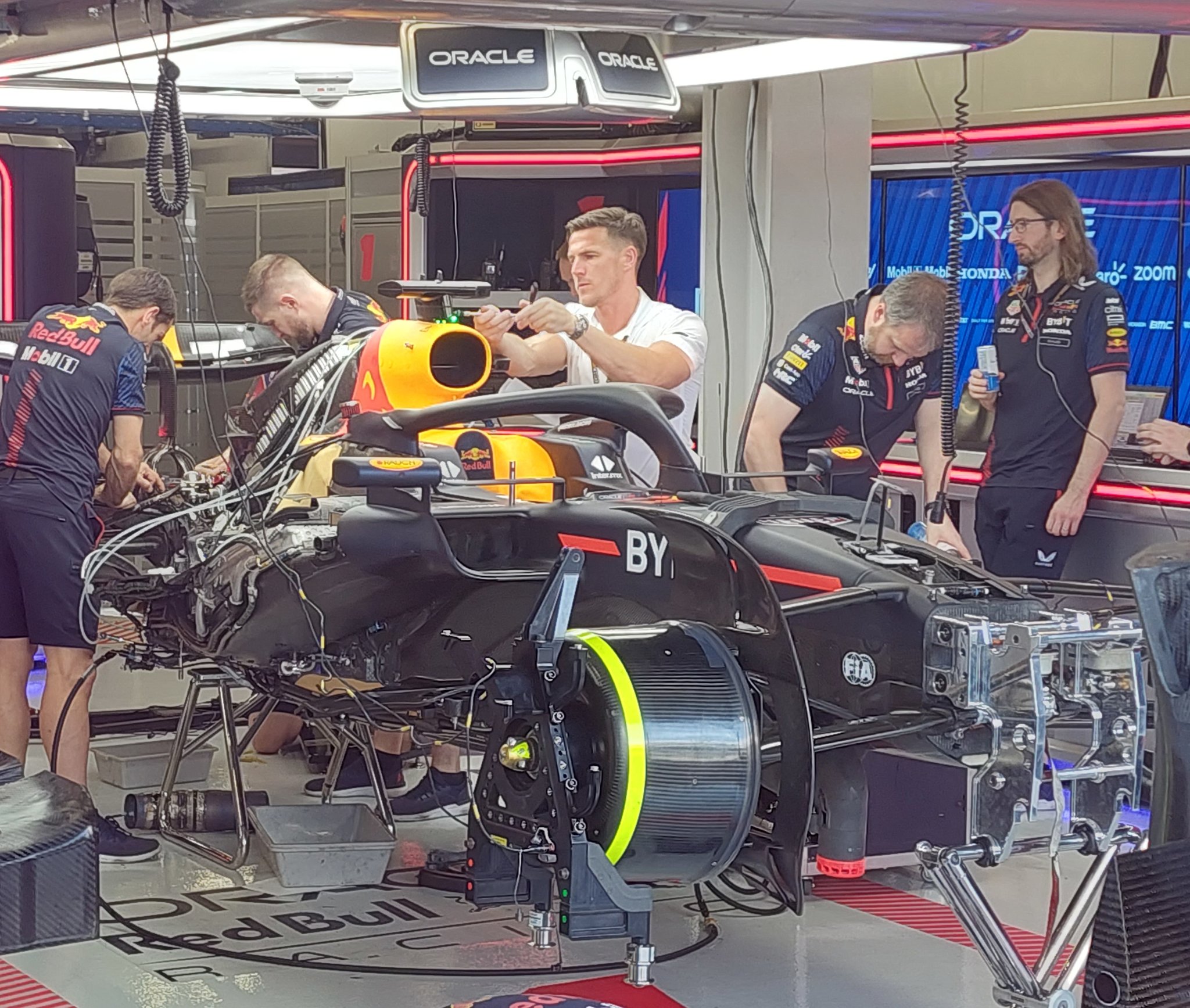Hypothesis: Red Bull’s correlation problems stem from Internal Flow Architecture, not Surface Aero
Red Bull’s development struggles with the RB20 and RB21 have been largely attributed to surface aero correlation issues, I believe the root cause may lie deeper in the internal flow architecture and packaging strategy. The evolution from RB19 to RB20 introduced significant changes to the internal cooling layout, many of which are now being reversed in RB21. This backtracking seems to correlate with gradual improvements in real world performance, suggesting the correlation delta lies within internal aero structures rather than external geometries.
Let's start with RB19 vs RB20...
RB20 debuted with a V shape sidepod radiator arrangement compared to RB19 slanted layout.
RB19 top
RB20 middle


They also introduced a Mercedes style “shoulder cannon” which Mercedes abandoned at the start of 2024 and Redbull in second half of 2024. More on this later.

With RB21, Red Bull has reverted to a more RB19 like slanted radiator layout, aligning the radiators more diagonally along the lower sidepod plane. This creates a smoother flow path from inlet to outlet, reducing internal pressure build up and flow separation potential.

In Saudi Arabia 2025, they also modified the central cooling configuration, moving from a horizontally stacked central core to a canted (angled) heat exchanger, again following RB19’s more inertial flow friendly setup.
RB19 for comparison..

These shifts in layout aren’t superficial... They deeply affect internal duct efficiency and mass flow rate through radiators not to mention the thermal boundary layer development inside the sidepod.
Why It Matters?
In the RB20, the V radiators likely introduced non linearities in the internal flow behavior under yaw and pitch, possibly causing local flow detachment, swirl pockets, or thermal stratification that was not adequately captured in CFD or wind tunnel testing especially if internal flows were simplified in RANS or preconditioned for correlation with experimental rigs.
This would explain why sim and tunnel data looked fine, as Helmut Marko and Horner admitted. But on track, the car responded non-linearly to setup changes, particularly in transitional phases and under thermal load.
With all this, the correlation issue may not stem from wind tunnel to track deltas on the external aero, but from inaccurate modeling of internal aero thermal interactions, especially under dynamic conditions like crosswinds or changing corner speeds.
Internal ducting is often modeled using simplified flow proxies or idealized flow boundaries in RANS CFD and 60% scale tunnel testing. The compressible flow behavior, thermal gradients, and swirl in internal ducts aren’t always captured accurately. If that's not enough, Wind tunnels typically use isothermal models or neglect multi-phase heat transfer in ducts, underestimating losses and recirculation effects.
Despite its strengths, Even DES struggles in internal aero scenarios unless significantly extended or combined with Conjugate Heat Transfer (CHT) models.
If I had to guess, Red Bull likely relied on DES for external aero but treated internal flow with more simplified approaches, perhaps steady RANS or a decoupled thermal map. If the internal changes in RB20/21 introduced new vortex breakdown points, unstable separation zones, or thermal interference, these may...
1) Pass tunnel tests due to lower fidelity.
2) Look clean in sim data.
3) Completely misbehave on track, especially at high loads, yaw, or over bumps.
Redbull's alternatives are DES + CHT or a wall modeled LES...$$$
Red Bull’s performance uptick in Jeddah coincided with a clear step back toward RB19’s internal configuration. While it’s true that Jeddah naturally suits Red Bull’s general balance philosophy, the timing of the internal architecture revisions and their immediate effect on correlation confidence suggests a deeper link.
As we’ve seen historically (Mercedes 2022–23), internal flow mismanagement can lead to unpredictable aerodynamic balance shifts, particularly when thermal load and ride height vary lap to lap. Red Bull may have briefly walked into a similar trap where the packaging gains introduced new internal flow inefficiencies that the tunnel and sim couldn’t replicate with sufficient fidelity.
In my view RB21 appears to be regaining performance as it regresses to RB19 era internal flow designs, implying that the core of the correlation issue was never about floor edge development or external surface aero, but rather about the flow conditioning inside the chassis and sidepods, especially in how it integrates with rear downforce structures.
I learn from the mistakes of people who take my advice...





